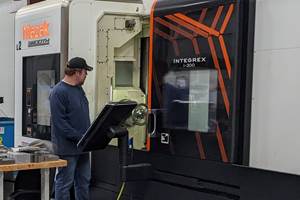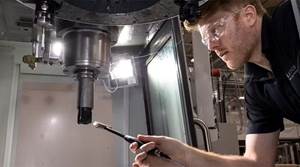How PLM Helps Manage Global Supply Chains
Product Lifecycle Management (PLM) can make it possible to capture information from all stages of manufacturing and production. Here are a few examples of how PLM can help optimize production processes that are spread around the world.
Share





Manufacturers hoping to improve the efficiency of their globally dispersed production processes are presented with a number of challenges. For instance, it is difficult to balance production lines and optimize use of global assets when there is a wide variation in plant capabilities. Such variability also makes it difficult to coordinate multiple subassemblies with the schedule of the main assembly so that parts and assemblies arrive at the right stage of production at the correct time.
Another hurdle to overcome with a global supply chain is a lack of communication between design and manufacturing. This disconnect not only makes it difficult to plan for product variation, but it hinders designers from incorporating production and assembly experience into new designs to improve manufacturability.
Product Lifecycle Management (PLM) is an enterprise, business and information strategy that enables companies to establish global information networks to meet these challenges. By providing a digital manufacturing environment with a centralized data repository, PLM can make it possible to capture information from all stages of manufacturing and production. This includes product engineering; product release management; assembly process planning; process simulation and validation; process detailing and documentation; and product launch support.
Frans Adamowicz is the director of Global Industry Solutions for Machinery for Siemens PLM Software (Plano, Texas). Mr. Adamowicz offers a few examples of how fundamental PLM strategies can help companies optimize production processes that are spread around the world.
1) Integrate design and manufacturing data to eliminate the “design change penalty.” Most companies use a mix of specialized software applications to manage design and manufacturing processes. Although these solutions are useful, they can isolate valuable data. This problem becomes more pronounced when using global suppliers, especially when product design changes are made.
Companies working in a digital manufacturing environment can view graphical representations of production and assembly processes to quickly accommodate design changes. When this digital manufacturing environment is supported by PLM, a design change can automatically update manufacturing process data no matter where the work is being performed, minimizing the negative effect on a global production processes.
2) Simulate global operations in a virtual environment. It is typically unfeasible to test a production process on the factory floor. A digital manufacturing environment with a centralized data repository (provided by PLM) makes it possible to capture information from all stages of the manufacturing and production process from design through to product launch support. Uniting the entire global process into one coordinated team permits computer simulations to balance production lines and to anticipate and alleviate production bottlenecks. In addition, computer simulations can uncover potential supply chain problems.
3) Make the important data easy to find and access. Although the information a company needs to improve production efficiency often already exists, it may be difficult to quickly or easily locate or access it. An open digital environment with a central repository containing both design and manufacturing data allows companies to build production efficiency into product designs, analyze manufacturability in current and planned facilities and establish continuous improvement cycles built on manufacturing experience. It is often beneficial to provide the information in an easily accessible, “lightweight” format, such as the JT common data format.
The JT data format serves as a common 3D language for enabling product visualization and information sharing among PLM software applications. The functional, lightweight nature of JT makes it possible to view and share product data, manufacturing information and interactive images in real-time throughout all phases of the product lifecycle.—DRK
Related Content
Tips for Designing CNC Programs That Help Operators
The way a G-code program is formatted directly affects the productivity of the CNC people who use them. Design CNC programs that make CNC setup people and operators’ jobs easier.
Read More5 Tips for Running a Profitable Aerospace Shop
Aerospace machining is a demanding and competitive sector of manufacturing, but this shop demonstrates five ways to find aerospace success.
Read MoreHow to Mitigate Chatter to Boost Machining Rates
There are usually better solutions to chatter than just reducing the feed rate. Through vibration analysis, the chatter problem can be solved, enabling much higher metal removal rates, better quality and longer tool life.
Read More4 Commonly Misapplied CNC Features
Misapplication of these important CNC features will result in wasted time, wasted or duplicated effort and/or wasted material.
Read MoreRead Next
Machine Shop MBA
Making Chips and 91ÊÓƵÍøÕ¾ÎÛ are teaming up for a new podcast series called Machine Shop MBA—designed to help manufacturers measure their success against the industry’s best. Through the lens of the Top Shops benchmarking program, the series explores the KPIs that set high-performing shops apart, from machine utilization and first-pass yield to employee engagement and revenue per employee.
Read MoreAMRs Are Moving Into Manufacturing: 4 Considerations for Implementation
AMRs can provide a flexible, easy-to-use automation platform so long as manufacturers choose a suitable task and prepare their facilities.
Read MoreLast Chance! 2025 Top Shops Benchmarking Survey Still Open Through April 30
Don’t miss out! 91ÊÓƵÍøÕ¾ÎÛ's Top Shops Benchmarking Survey is still open — but not for long. This is your last chance to a receive free, customized benchmarking report that includes actionable feedback across several shopfloor and business metrics.
Read More






















